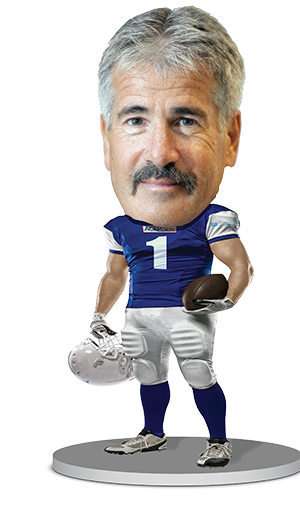
Explore This Issue
ACEP Now: Vol 36 – No 02 – February 2017ILLUSTRATION: Chris Whissen & shutterstock.com; Auerbach photo: Mark Tuschman
From peewee leagues to the NFL, football is a national obsession in the United States. However, recent research into football-related injuries is starting to illuminate the grave neurologic toll the sport can take on its players.

Paul S. Auerbach, MD, MS, FACEP, MFAWM, FAAEM, Redlich Family Professor in the department of emergency medicine at Stanford University School of Medicine in California, and coauthor William Waggoner decided to combine the current research on sports-related concussions with their knowledge of football to suggest a series of rule changes that could help protect players’ brains.1
ACEP Now Medical Editor in Chief Kevin Klauer, DO, EJD, FACEP, recently sat down with Dr. Auerbach to discuss what inspired him to write this opinion piece and what he hopes football organizations will take away from it. Here are some highlights from that discussion.
KK: Let’s talk about your very provocative, interesting, and forward-thinking editorial about concussions that came out Sept. 27, 2016. What prompted you to write this?
PA: I got interested in this largely because of my experience as a team physician for a local high school and observing a lot of concussions in football players. I also want to give credit to my coauthor, Bill Waggoner. He was a high school coach and an outstanding collegiate player.
A few years ago, I was involved in a study to look at a noninvasive device to diagnose concussions. We discovered that it took a minimum of four to six weeks for the concussed players to get back to a baseline measurement. I discussed this finding with other investigators in the field who had used other methods to diagnose concussions and who had found the same result. That flew in the face of what commonly occurs with players, who get returned to play anywhere from 24 hours to about a week. That exposes them to what is commonly referred to as second-impact injury, which most people believe is far worse than the initial injury.
Tom Talavage, PhD, at Purdue University and other investigators have highlighted the fact that, with objective MRI techniques, subconcussive injuries—meaning injuries in which players don’t become clinically symptomatic in the same way that do persons who have an acute injury altered enough to be recognized at that moment—are prevalent. There is an enormous number, reasonably in the range of 10 to 20 percent, of players who are being injured.
Pages: 1 2 3 4 | Single Page





No Responses to “Emergency Physician Suggests Rule Changes to Combat Football-Related Concussions, Head Injuries”